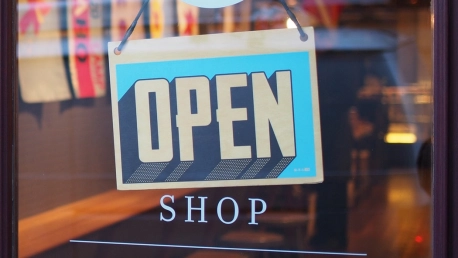The updated state of retail businesses concerns all those professionals who want to stay ahead of their peers. When it comes to retail technology, market tendencies and trends are important. North American retailers (73 percent of them) especially follow the forecasts for new technologies. This attitude helps them remain more efficient than foreign retailers.
The public nowadays is a shifty mass. They might change their preferences on what it seems like a whim to the uninformed observer. In fact, being always connected, the existing and potential customers have the privilege of finding out the latest deals. Customers swarm towards the most innovative offer in the blink of an eye. They are always on, and when their majority is made of digital natives, it’s in their instinct to scan and detect the novelties, the fresh ideas and all the things the digital world deems “interesting”.
So what would be the main traits of the today’s retail state?
Millennial shoppers are the main force (that businesses need to embrace and attract)
Perhaps you already thought of Millennials with the generic portrayal of today’s shoppers above. Yes, it is precisely them who dominate in retail. Millenials are more into the shopping experience than into the actual items they buy. Their demands for a flawless omnichannel integration are high. They also enjoy a perfectly integrated digital and brick-and-mortar shopping environment. This means they should easily glide from one into the other.
A complete, overall retail experience that would mobilize and empower the Milennials. Here’s what any mainstream brand dreams of. There are also niche businesses that prefer to stick with particular types of clients, of course. However, that is a different, non-dominant group.
Social networking is important and it is adding new tools by the month
Take for example Twitter Moments, another way for the already famous platform to encourage brands to reach out for their audiences via this medium. Twitter adopted this strategy instead of sending visitors towards off-platform sources of information.
On the other hand the click-to-buy buttons proved to be less successful than expected. Consumers manifested reluctance in using them. Pinterest and Instagram considered their removal one year after the official launch.
Regardless of their final outcome, social media tools for retailers raise the expectations of brands employing them in order to show a dynamic, modern mindset. The desire to please customers is also measured in trendy features. Once a new tool is on the rise, clients expect to see their brand acquiring it, in a perhaps childish tendency of seeing how it fits.
Childish, playful or simply making shopping more accessible and convenient, this state of mind fuels the state of retail. Organizations should build their budgets, calculate the risks very methodically. Then go for it and allow their marketers and salespersons to make use of all the digital tools in fashion.
Shopping experiences outperform product importance
As we have mentioned before, shoppers have become more selective. They value the entire shopping experience. Buyers are no longer being preoccupied exclusively with the product. It may seem somehow of a paradox, considering how online shopping is part of many people’s shopping experience. It also may be easily construed as being a product-only situation. Yet, even for the online stores, customers pay attention, judge and react to the way their orders are processed or delivered, and to the customer experience in all its details.
Although the digital experiences are in the spotlight, it is interesting to note that Millennials (as we’ve seen, they are the focal point of the customers’ mass) actually do enjoy the physical store experience. Their concept of a modern store involves a relaxed, ergo-dynamic space. This means available connectivity, spaces for hanging out, knowledgeable employees and friendly atmosphere.
State of retail fact: cyber-security issues thwart customers enthusiasm
Identity theft concerns the majority of American customers (about one in five people feel they are critically endangered and would rather stand physical violence than this). They are unwilling to share their personal and financial information, because they worry where their data might end up.
In retail, big data is important for automated activities, personalization and metrics. Accurate results further generate real-life changes to better suit the customers’ needs and preferences. However, the customers have a feeling that no one bothers to ask their opinion or obtain an authentic agreement before processing their data. Data breaches that expose PII (personal identifiable information) have aggravated this protection/free will issue. Therefore the customers-retailers collaboration process suffered a serious setback.
The leading strategy position in retail now belongs to CDOs
CDO stands for chief digital officer (the title is still in the structuring phase). Perfecting the omnichannel concept and functionality actually integrates many of the other issues (more precisely, their solutions). Moreover, even with brick-and-mortar stores reaffirming their presence, the digital experience remains in the leading position. In consequence, it only makes sense that a digital specialist should guide the retail brands into the seemingly integrated world of tomorrow.
IoT waits just around the corner, while tech hardware and software adapt as fast as they can. The retailers of tomorrow are embracing a new confidence in the digital specialists’ abilities. These professionals show rapidity in assessing situations and approximating probabilities. They are keen on anticipating the next move or in employing automation for estimates and strategics. CDOs employ tech-derived working techniques (see how Agile migrated from development to marketing, for example). All these push digital officers in a leading position when it comes to modern retail strategy.









